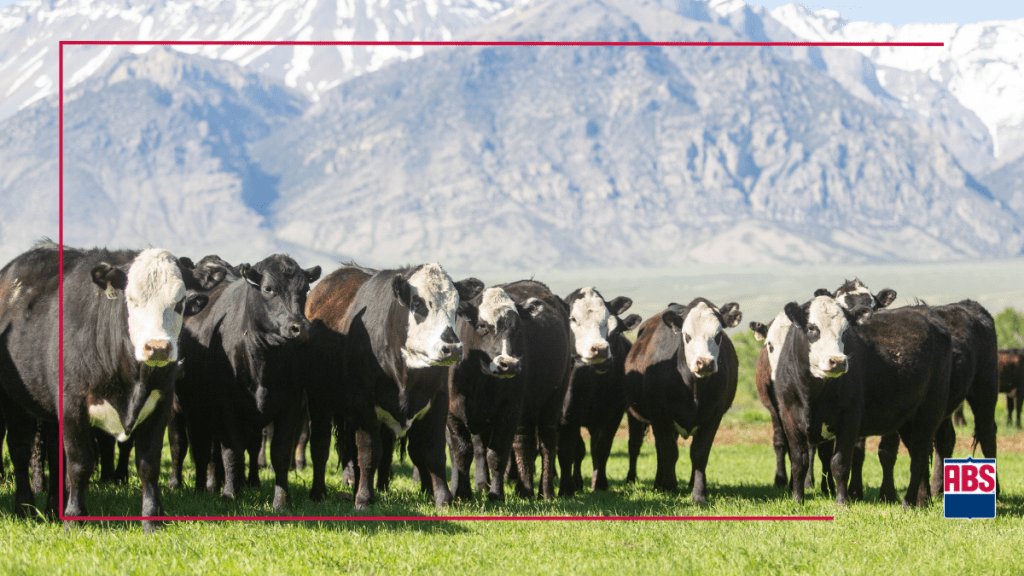Publish date: 10.22.25
Composite cattle have a long history in the beef industry, but their advantages remain highly relevant today. Developed over multiple generations of crosses and back-crosses, composite cattle combine desirable traits from two or more breeds in a way that simultaneously masks or lessens each breed’s weaknesses. This process results in a more uniform, predictable herd—an asset for commercial cattlemen seeking consistency and improved productivity.
Three Benefits of Composite Cattle
- Leveraging breed complementarity
- Developing environmentally adapted animals
- Harnessing the power of heterosis or hybrid vigor
Leveraging Breed Complementarity
One of the main strengths of composite cattle lies in their ability to leverage breed complementarity. For example, breeds like Angus, known for superior carcass quality, are often paired with Continental breeds such as Limousin or Simmental, prized for performance and cutability. These combinations, like SimAngus™ (Simmental-Angus) or Lim-Flex® (Limousin-Angus), aim to produce cattle with the best of both worlds: high-quality carcasses that meet market demands.
Developing Environmentally Adapted Animals
Environmental adaptation is another key benefit for composite cattle. In developing environmentally adapted composite cattle, the saying “opposites attract” often holds true. Many have been created by blending heat and insect-tolerant breeds like Brahman with European breeds to develop cattle that thrive in more tropical environments and offer better end-product and market acceptance. Breeds like Santa Gertrudis, Beefmaster, and Brangus exemplify this approach, offering producers cattle suited for diverse climates and conditions.
Harnessing the Power of Heterosis or Hybrid Vigor
Heterosis, or hybrid vigor, further supports the appeal of composite cattle. By combining breeds, producers benefit from increased fertility, longevity, and health or survivability—traits that are hard to select for through breeding alone. Many livestock producers understand the benefits of hybrid vigor, but they often find it challenging to capitalize on those advantages without using complicated breeding programs involving multiple breeds of bulls. Composite cattle make this easier by enabling producers to harness both hybrid vigor and breed complementarity simultaneously, all while needing only one breed of bull. Although composites don’t fully maximize heterosis, they offer a simple and effective way to capture a substantial share of its advantages.
Heterosis is particularly impactful to the traits most valuable to the commercial producer, such as fertility, longevity, and health/survivability, but are also the hardest to select for through breeding alone.
Reasons for the Low Adoption of Composite Cattle
Despite their advantages, composites have yet to dominate the marketplace. Factors like market preferences for black-hided cattle and the widespread success of Angus marketing programs have kept purebred and straight-bred herds prevalent. Nonetheless, many of the benefits—like improved feed efficiency, cow longevity, and reproductive performance—align with current industry priorities. Composite cattle’s ability to address these challenges makes them a valuable option.
A lack of genetic evaluations used to be a concern for composite cattle. Nevertheless, several composite breeds provide numerous economically important expected progeny differences (EPDs) and selection indexes derived from routine genomically enhanced genetic evaluations. Many breed associations have recognized the benefits of composites and now incorporate them into their genetic evaluation programs.
While composites may not be suited for every operation, understanding your environment and market needs can help determine if they are a good fit for your program. Despite this, composite cattle offer numerous benefits to commercial producers across various production environments in the U.S. Ultimately, the advantages of heterosis are undeniable for cow-calf operations, and composites represent perhaps the easiest way to harness some of these benefits.
Learn more about composite cattle by reading our article originally published in Progressive Cattle.
Want to learn more about composite cattle? Contact your ABS Representative or complete the form below.







